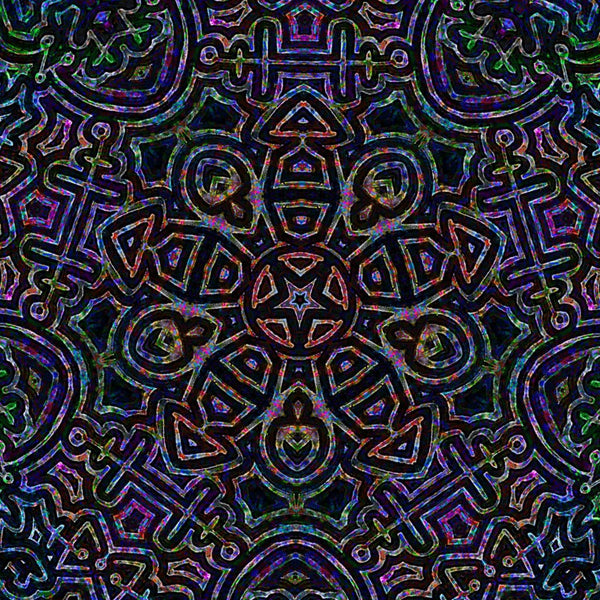Your Cart is Empty
Buy Any 4 Items, Get 15% Off Your Order!
Buy Any 4 Items, Get 15% Off Your Order!
The Enigmatic World of Shinto: Spirits, Kami, and Sacred Spaces
September 03, 2024

Shinto, Japan's indigenous spirituality, is a deeply rooted belief system that infuses everyday life with a sense of the sacred. Unlike many religions, Shinto does not have a founder or holy scriptures. Instead, it is a living tradition, where spirits known as kami inhabit the natural world, and sacred spaces provide a bridge between the human and the divine.
The Essence of Kami: Spirits in All Things

In the heart of Japan, there is a revered 1,000-year-old camphor tree at the Hakozaki Shrine in Fukuoka. This tree is believed to house a powerful kami, and locals gather around it to offer prayers, especially during the Hakozaki-gu Hojoya Festival. The festival, which has been celebrated for over a millennium, honors the spirits of all living things and emphasizes harmony between humans and nature. The tree, with its massive trunk and ancient roots, serves as a reminder of the kami's presence in the natural world and the importance of respecting nature.
“Kami are not distant deities in the sky, but spirits that inhabit the world around us,” explains Hiroshi Tanaka, a Shinto priest from Kyoto. “They are in the trees, the rivers, the mountains, and even in objects crafted with care.”
This belief that kami exist in all things fosters a profound respect for nature. The villagers' reverence for their sacred tree is just one example of how Shinto encourages a deep connection with the environment. In Shinto, the divine is not separate from the world but is intricately woven into the fabric of life.
Sacred Spaces: Shrines and Natural Sanctuaries

In the Kii Peninsula, the Kumano Kodo pilgrimage routes have been walked for over a thousand years by emperors and commoners alike. One such famous route leads to the Kumano Nachi Taisha, a grand shrine that has long been a spiritual destination. The shrine is situated near Nachi Falls, Japan’s tallest waterfall, which has been revered as a sacred site since ancient times. Pilgrims often describe feeling a deep sense of spiritual connection when they arrive at the shrine, particularly when they first see the waterfall.
In 2014, a pilgrimage was documented by writer Pico Iyer, who noted the profound sense of peace and otherworldliness that pervades the entire area. The natural surroundings and the historical significance of the shrine blend together to create an atmosphere where the divine seems palpably close.
Shrines like Kumano Nachi Taisha, known as jinja, are scattered across Japan. Each shrine is dedicated to one or more kami, and they serve as focal points for worship and community life. The torii gate at the entrance of a shrine marks the boundary between the ordinary world and the sacred. Passing through it is an act of purification, a symbolic step into the realm of the divine.
“When you step through a torii gate, you are entering a different realm,” says Kazuo Hara, a shrine caretaker. “It is a place where the kami are present, and where you can feel their energy.”
The architecture of Shinto shrines is designed to blend seamlessly with the natural environment. At the famous Ise Grand Shrine, which is rebuilt every 20 years, the sacredness of the space is tied not just to the structure but to the cyclical renewal of the materials, reflecting the Shinto belief in continuity and impermanence.
The Role of Rituals and Festivals

Every New Year’s Eve, millions of Japanese visit their local shrines for Hatsumode, the first shrine visit of the year. The atmosphere is festive, with food stalls, games, and traditional performances. Families line up to make their offerings and prayers for the coming year. “It’s a time to reconnect with the kami and to start the year on the right foot,” says Yumi Nakamura, a frequent visitor to Meiji Shrine in Tokyo.
Shinto festivals, known as matsuri, are community-centered events that celebrate the presence of the kami. One of the most spectacular is the Gion Matsuri in Kyoto, which dates back over a thousand years. The festival features parades with elaborate floats, traditional music, and dance performances. Each float represents a different aspect of the city’s history and the kami who protect it.
In the coastal village of Shika in Ishikawa Prefecture, the annual Abare Festival, also known as the “Fire and Violence” festival, has been celebrated for over 350 years. Fishermen and locals take part in this intense festival, which involves carrying portable shrines through the town and then into the sea, symbolizing the kami’s journey and their protection of the community.
During the 2018 festival, a group of fishermen shared a harrowing experience from years prior when they were caught in a fierce storm while at sea. They credited their survival to their prayers to the sea kami, which they believe calmed the storm. This deep-rooted belief in the kami’s protective power is what drives their participation in the festival each year, despite its demanding and sometimes dangerous nature.
Shinto's Influence on Japanese Culture

Shinto is not just a religion but a cultural foundation that influences everything from art and literature to daily customs. The Japanese concept of “mono no aware”—a sensitivity to the transient beauty of things—is deeply rooted in Shinto. The cherry blossom, for example, is revered not just for its beauty but for its fleeting existence, symbolizing the transient nature of life.
Even in modern Japan, where technology and urbanization have transformed the landscape, Shinto practices remain relevant. A businessman in Tokyo may visit a shrine before an important meeting, while a young couple may have a traditional Shinto wedding at a shrine, seeking the blessings of the kami for a harmonious life.
“Shinto is woven into the fabric of Japan,” says Kazuko Yoshida, a cultural historian. “It’s in the festivals, the architecture, the way people interact with nature, and even in the way they approach life and death.”
In essence, Shinto offers a way to experience the divine in the everyday. It is a living tradition that continues to evolve while remaining deeply connected to the timeless principles of respect, harmony, and the recognition of the sacred in all things.
Leave a comment
Comments will be approved before showing up.
Also in Sacred Surreal Blog
newsletter signup
Be the first to know about upcoming sales and promos. Get a 10% discount coupon when you subscribe!
Subscribe
Sign up to get the latest on sales, new releases and more …

Storewide Sale!
Buy any 4 items and get 15% off your total order! For a limited time only.



